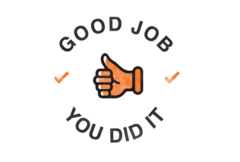 “How come I can’t get them to tell me how they used my money?” the donor asked.
“How come I can’t get them to tell me how they used my money?” the donor asked.
That one question alone captures a huge problem in fundraising – a problem you can do something about in your major gift program.
In the 40 years I have been involved in fundraising, I have only seen a couple of instances where a donor actually required a very strict accounting of how their money was used. On the other hand, over all of these years, I have seen hundreds – perhaps thousands – of situations where donors are wondering if their giving really made a difference.
So when a donor asks how you used their money, they are simply wanting to be assured that actual good was done – that the problem you asked them to solve was addressed, even in part. That’s all. Nothing more. I really don’t know why this is so hard. Perhaps it requires more information from the program folks or finance. Or perhaps for some reason your organization is collectively defensive, preventing a very simple answer – one that could be answered if everyone put forward an effort to help.
In major gifts, the key to keeping your qualified caseload donor happy with you and your organization is to give feedback on how things are going. You can’t do this too frequently.
This is why I was so interested to read, in an article published by The Guardian, that Oxfam (a very large and successful international relief and development organization) plans to harness the power of the smartphone to bring donors closer to its work.
They are launching an app, My Oxfam, that it says “will make donating easy and rewarding. The app will also bring supporters closer to the charity’s projects, offer a new level of transparency around its work…. The app aims to build trust among supporters by giving them an insight into the charity’s work and the way funds are spent, through video diaries from Oxfam staff on the ground, stories about the people the charity is supporting, and live updates on emergencies.”
The article goes on to say,
“Oxfam’s head of fundraising, Paul Vanags, said: ‘Charities are striving to meet the public’s demand for a closer, more modern and responsive relationship with the charities they support … My Oxfam provides a window on to the lives changed by our supporters’ generosity and allows users to control their giving from the palm of their hand.’
“Users can track how much they have donated through sponsorship, items donated to shops, or cash payments, and can adjust their monthly donations. When there is a humanitarian emergency, Oxfam can issue an appeal through the app, and then allow donors to follow the charity’s work on the issue long after the initial crisis is over.”
This is absolutely amazing! And it is what is needed to bring donors closer to the organizations they support.
You might not be able to pull this off in your organization, but you can, on a regular basis:
- Give your caseload donor frequent updates on progress in the area they are supporting. This can be good or bad news. Do not be afraid to talk about setbacks or rough times. Many programs do not go as planned. They change direction. Or they are cancelled. It is important for the donor to know. Do not keep secrets from your donor. They WILL find out, and a secret exposed is the worst damage you can do to your relationship. And of course, talk about the good news – a life changed, a forest saved, an animal rescued, a music program expanded, an arts program preserved, a student given opportunity, etc. etc. These are good things your donor needs to hear about.
- Engage your donor in conversations and exchanges on why they give to the program(s) they support. This second point is critical. Here’s why. You always want to keep finding out more and more about the donor and why they give, and what their core drivers and motivations are. This information will help you do two things: (a) it will help you thank them more effectively, as you will be giving them more specific information that matches their core motivations, and (b) it will help you craft future asks for the donor.
Remember this. You cannot do enough – you cannot go overboard – on giving your donor information on what his giving accomplished. You can easily do too little. So be alert to that. The main reason donors stop giving, give less or just go away is because they did not know that their giving made a difference. It’s up to you to make sure that doesn’t happen. Just commit to telling them what is going on.
Richard





0 Comments